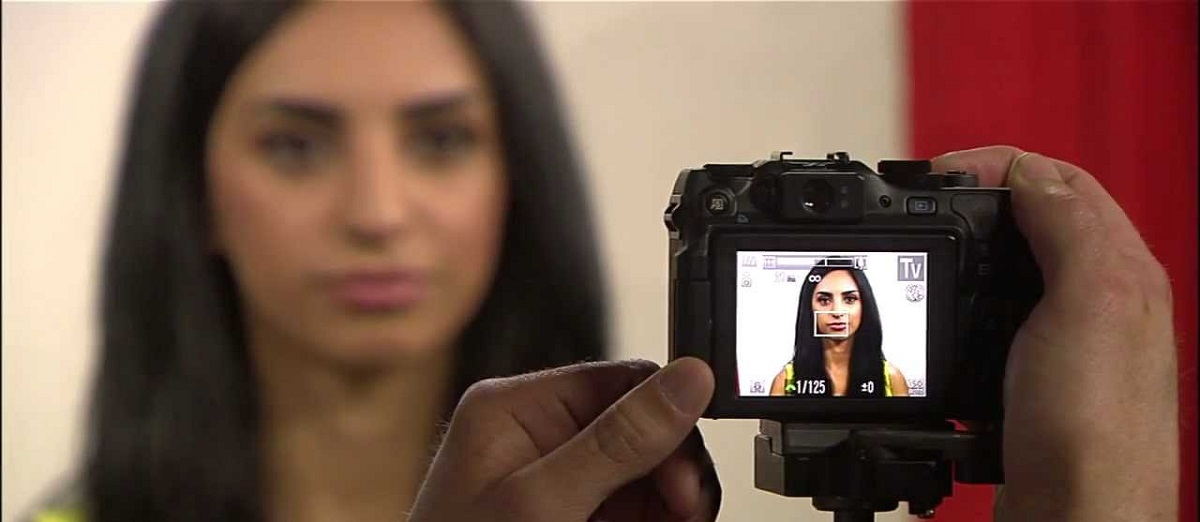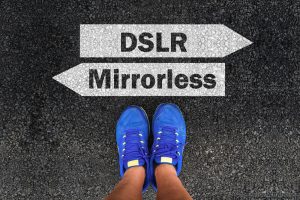Introduction
When it comes to obtaining an ID photo, many people still opt for traditional methods, such as visiting a professional photographer or using a photo booth. However, with the rapid advancement of digital cameras, taking an ID photo in the comfort of your own home has become a viable option. Not only does this save you time and money, but it also allows you to have full control over the final result.
Using a digital camera for ID photos provides numerous advantages. Firstly, you have the flexibility to retake the photo until you are completely satisfied with the outcome, ensuring that you present yourself in the best possible light. Additionally, you can easily adjust the camera settings and lighting to optimize the image quality and ensure that it meets the specific requirements set by ID issuers.
Whether you need an ID photo for a passport, driver’s license, or any other official document, taking it with a digital camera offers convenience and control. In this guide, we will explore the factors you should consider, the equipment you need, and the essential techniques for capturing a high-quality ID photo using a digital camera.
To begin, it is important to consider the various factors involved in taking an ID photo. These include the background, lighting, camera settings, and the proper positioning of the subject. By understanding and addressing these elements, you can ensure that your ID photo meets the strict requirements stipulated by the issuing authority.
Now, let us delve into the step-by-step process of capturing a flawless ID photo with a digital camera. With the right knowledge and equipment, you will be able to achieve professional-looking results and save yourself from the inconveniences that can arise from using alternative methods.
Why Take ID Photos with a Digital Camera?
Taking ID photos with a digital camera offers several advantages over traditional methods. Let’s explore why this approach is becoming increasingly popular:
1. Cost-Effective: Opting for a digital camera allows you to take unlimited photos without incurring additional expenses. Unlike visiting a professional photographer or using a photo booth, you have complete control over the process, eliminating the need for multiple attempts or additional fees.
2. Convenience: Taking ID photos at home with a digital camera offers unparalleled convenience. You no longer need to schedule appointments or travel to a photography studio. Instead, you can capture your photo whenever it is convenient for you.
3. Customization: When taking your own ID photo, you have full control over the entire process. From selecting the background and adjusting the lighting to experimenting with different poses, using a digital camera allows you to customize every aspect of your photo to meet your preferences and the requirements of the issuing authority.
4. Retakes: Traditional ID photo methods often offer limited or no retake options. With a digital camera, however, you can take as many photos as needed until you are completely satisfied with the result. This ensures that you present yourself in the best possible way and avoid the frustration of receiving an ID card with an unflattering photo.
5. Quality Control: By taking your ID photo with a digital camera, you can optimize the image quality to ensure that it meets the specific requirements set by the ID issuers. You have the flexibility to adjust the camera settings, focus, and lighting to capture a sharp and clear image that accurately represents your appearance.
6. Privacy: Some individuals might feel more comfortable taking their ID photos in the privacy of their own home rather than in a public photo booth or studio. With a digital camera, you have the freedom to maintain your privacy while still capturing a professional-looking ID photo.
7. Time-Saving: Eliminating the need to travel to a photographer or photo booth not only saves you money but also saves you precious time. With fast and efficient digital cameras, you can complete the entire process of capturing your ID photo in a matter of minutes.
As you can see, taking ID photos with a digital camera offers numerous benefits, from cost-effectiveness and customization to convenience and quality control. By following the step-by-step process explained in this guide, you can ensure that your ID photo meets the required standards while saving time and money.
Factors to Consider
Before grabbing your digital camera and snapping away, there are several important factors to consider when taking ID photos. These factors will not only ensure that your photo meets the strict requirements of the issuing authority but also help you capture a professional-looking image. Let’s explore these factors in detail:
1. Background: The background of your ID photo should be plain, neutral, and free from any distractions. Opt for a solid-colored background such as white, gray, or light blue. Avoid busy patterns, logos, or any elements that may divert attention from your face.
2. Lighting: Proper lighting is crucial for a high-quality ID photo. Use natural, diffused lighting whenever possible. If shooting indoors, position yourself near a window to take advantage of natural light. Avoid using direct flash, as it can create harsh shadows and wash out your features. Experiment with different lighting setups to achieve a well-lit, evenly exposed photo.
3. Camera Settings: Adjusting the camera settings is essential to capture a clear and detailed ID photo. Use a tripod or stabilize your camera to avoid any blurriness. Set the ISO to a low value to reduce digital noise, and choose an aperture that provides sufficient depth of field to keep your face and background in focus. Additionally, ensure that the white balance is set correctly to avoid color casts.
4. Subject Positioning: The position and angle of your face in the photo are critical to meeting ID photo requirements. Your head should be directly facing the camera, with your eyes level and looking into the lens. Keep your face centered in the frame, while also leaving enough space above your head. Avoid tilting or angling your head as this can distort your features.
5. Facial Expression: Maintain a neutral facial expression for your ID photo. Avoid smiling, frowning, or any extreme expressions. Keep your mouth closed and relax your facial muscles. A neutral expression ensures that your photo appears professional and does not affect facial recognition technology used by ID issuers.
6. Clothing and Accessories: Dress appropriately for your ID photo, adhering to any guidelines provided by the issuing authority. Avoid wearing hats, head coverings, or any accessories that obstruct your face or cast shadows. Choose simple, solid-colored clothing that contrasts well with the background.
7. Photo Size and Format: Be aware of the specific size and format requirements for your ID photo. Different countries and organizations may have varying specifications. Ensure that your photo adheres to the correct dimensions, resolution, and aspect ratio to avoid potential rejection or resizing requests.
By considering these factors, you can capture an ID photo that meets the necessary standards while showcasing your best features. Take the time to carefully plan and prepare the elements of your photo, and you will be well on your way to capturing a professional-looking ID image with your digital camera.
Choosing the Right Camera
When it comes to taking ID photos with a digital camera, selecting the right camera is crucial for achieving optimal results. Here are some factors to consider when choosing the camera for your ID photo:
1. Image Quality: Look for a camera that provides high-resolution images and excellent image quality. An ideal resolution for ID photos is at least 8 megapixels. This ensures that the photo will be sharp, clear, and detailed, allowing for accurate facial recognition and identification.
2. Manual Controls: Opt for a camera that offers manual controls, such as aperture, shutter speed, and white balance. These controls allow you to fine-tune the camera settings, resulting in better exposure, color accuracy, and overall image quality.
3. Autofocus: Ensure that the camera has a reliable autofocus system. Sharp focus is essential for capturing a clear and well-defined ID photo. Look for a camera that offers fast and accurate autofocus capabilities, enabling you to achieve precise focus on your face.
4. Low Light Performance: When taking indoor ID photos or shooting in low-light conditions, a camera with good low light performance is essential. Look for a camera with a wide ISO range and low noise levels at high ISO settings. This will ensure that your photo remains clear and detailed even in challenging lighting situations.
5. Size and Portability: Consider the size and portability of the camera, especially if you may need to travel with it to capture ID photos on the go. A compact and lightweight camera will make the process more convenient and enable you to capture photos easily, no matter where you are.
6. Connectivity Options: Having connectivity options, such as Wi-Fi or Bluetooth, can be beneficial for quickly transferring your ID photos to your computer or mobile device for further processing or printing. This feature allows for easy editing, resizing, and formatting of your ID photo to meet specific requirements.
7. Budget: Lastly, consider your budget when choosing a camera for ID photos. Determine how much you are willing to spend and find a camera that offers the best balance of features and affordability within your price range. Remember, you don’t necessarily need the most expensive camera to capture professional-looking ID photos.
By considering these factors, you can find a camera that meets your specific requirements for capturing high-quality ID photos. Remember, the camera is just one tool in the process – proper lighting, composition, and technique also play crucial roles in achieving exceptional ID photos with your chosen camera.
Setting up the Scene
Creating the right environment and setting for your ID photo greatly impacts the final result. Here are some important considerations when setting up the scene for capturing your ID photo:
1. Choose a Well-Lit Area: Look for a well-lit area in your home or a location with ample natural light. Position yourself near a window or a light source to take advantage of soft, diffused lighting. Avoid harsh, direct sunlight as it can create harsh shadows and uneven lighting on your face.
2. Clear the Background: Ensure that the background behind you is clutter-free and devoid of any distractions. Remove any objects, decorations, or personal items that may draw attention away from your face. Remember that the focus should be on you, not on what’s behind you.
3. Plain and Neutral Background: Choose a plain and neutral background for your ID photo. A solid-colored wall or curtain in white, gray, or light blue works best. This helps to keep the focus solely on your face and ensures that there is no interference with the identification process.
4. Maintain Consistency: If you need to take multiple ID photos for various documents, try to maintain consistency in the setup and background. This ensures that your appearance remains consistent across different IDs, reducing any confusion or potential rejection of your photos.
5. Positioning of the Camera: Set up your camera on a tripod or stable surface to avoid any camera shake or blurriness. Ensure that the camera is positioned at eye level or slightly higher. This angle helps to capture a flattering and well-proportioned image of your face.
6. Framing and Composition: Compose your shot with careful consideration. Position yourself centrally in the frame, leaving enough space around your head and shoulders to adhere to ID photo specifications. Make sure there is equal distance from the top of your head to the top edge of the frame.
7. Consider Privacy: If privacy is a concern, you can drape a sheet or use a privacy screen behind you to hide any personal or sensitive information in the background. This allows you to maintain privacy while still achieving a clean and professional-looking ID photo.
Remember, the goal of setting up the scene is to create a clean and professional-looking environment that puts the focus on your face. Pay attention to the lighting, background, and positioning of the camera to capture a clear and well-composed ID photo that meets the required specifications.
Camera Settings
Configuring your camera settings correctly is essential for capturing a high-quality ID photo. Here are the key camera settings to consider when taking your ID photo:
1. Image Format: Set your camera to capture images in RAW or JPEG format. RAW files offer more flexibility for post-processing adjustments, while JPEG files are more widely accepted for ID photo submissions. Choose the format that best suits your needs and the requirements of the ID issuer.
2. White Balance: Adjust the white balance setting to ensure accurate color representation in your ID photo. Choose the appropriate white balance option based on the lighting conditions. If you are unsure, use the auto white balance mode to let the camera make the adjustments automatically.
3. ISO: Set your camera’s ISO to the lowest possible value, typically ISO 100 or 200, to minimize digital noise and produce a clean image. Avoid using high ISO values, as this can introduce unwanted noise or graininess to your ID photo, compromising its quality.
4. Aperture: Select an appropriate aperture to control the depth of field in your ID photo. For a sharp and focused image, choose a narrow aperture (high f-number, such as f/8 or higher) to ensure that both your face and the background are in focus. This helps maintain clarity and sharpness throughout the photo.
5. Shutter Speed: Set a suitable shutter speed to avoid camera shake and maintain a steady image. If shooting handheld, use a shutter speed that is at least equivalent to the focal length of your lens. For example, if shooting at 50mm, use a shutter speed of 1/50s or faster to prevent blurriness caused by hand movement.
6. Focus: Ensure that your camera is set to autofocus (AF) mode for quick and accurate focusing. Set the focus point to the center of the frame or select a specific focus point over your face to ensure that the camera is focusing correctly on the most important area of the photo.
7. Exposure Compensation: Use exposure compensation if necessary to adjust the overall brightness of your ID photo. If the photo appears too dark or too bright, adjust the exposure compensation setting to increase or decrease the exposure until you achieve the desired brightness levels.
It is crucial to familiarize yourself with your camera’s settings and options before taking your ID photo. Experiment with different settings and lighting conditions to determine the optimal configuration for capturing clear, well-exposed, and high-quality ID photos. Additionally, always refer to the specific requirements set by the ID issuer to ensure that your camera settings meet their guidelines.
Positioning the Subject
The proper positioning of the subject is key to capturing a professional-looking ID photo. Paying attention to your pose and facial alignment will ensure that your photo meets the required standards. Here are some essential tips for positioning yourself correctly:
1. Face the Camera: Position yourself directly facing the camera to create a straightforward and symmetrical portrait. This allows for clear facial recognition and identification. Avoid tilting your head or angling your face as it can distort your features and potentially cause issues during the verification process.
2. Maintain Eye Level: Keep your eyes level with the camera lens to create a natural and balanced look. This helps to avoid any asymmetry in your facial features. Adjust the height of the camera or your position accordingly to achieve the correct eye level alignment.
3. Centre the Head within the Frame: Ensure that your head is centered in the frame of the photo. Position yourself in such a way that there is an equal amount of space on each side of your head, creating a balanced composition. This helps to maintain a clear focus on your facial features.
4. No Obstructions: Remove any obstructions that may block your face or obscure your features. Avoid wearing hats, headbands, or any accessories that cover your forehead or cast shadows on your face. The goal is to have a clear and unobstructed view of your face for accurate identification.
5. Maintain a Neutral Expression: Keep a neutral facial expression for your ID photo. Avoid smiling, frowning, or any exaggerated facial expressions. Relax your facial muscles and keep your mouth closed. A neutral expression ensures that your photo adheres to the required standards and simplifies facial recognition processes.
6. Full Face Visibility: Ensure that your entire face, including both ears, is fully visible in the photo. Do not tilt your head or angle it in a way that obstructs any part of your face. The photo should clearly display all facial features to meet ID photo requirements.
7. Maintain Consistency: If you need to take ID photos for various documents, strive to maintain consistency in your facial position, pose, and expression across all photos. This reduces potential confusion and ensures that your appearance remains consistent across multiple IDs.
By following these positioning guidelines, you can ensure that your ID photo meets the necessary standards and accurately represents your facial features. Remember to adjust and fine-tune your positioning as needed, paying attention to detail to capture a professional-looking ID photo.
Lighting Techniques
The proper lighting is crucial for capturing a high-quality ID photo. It helps to highlight your features, ensure accurate color representation, and create a professional-looking image. Here are some essential lighting techniques to consider when taking your ID photo:
1. Natural Light: Whenever possible, utilize natural light as your main light source. Position yourself near a window or in a well-lit area to take advantage of soft and diffused natural light. Natural light provides a flattering and even illumination that enhances your features and minimizes harsh shadows.
2. Diffuse Harsh Light: If shooting in direct sunlight or under harsh lighting conditions, use diffusers such as sheer curtains or white fabric to soften and spread the light. This helps to reduce harsh shadows and create a more evenly lit photo.
3. Avoid Direct Flash: Avoid using the camera’s built-in flash or any direct flash that can create unflattering shadows and wash out your features. Flash photography can produce harsh lighting conditions, so it’s best to use alternative lighting techniques for a more pleasing and natural-looking result.
4. Three-Point Lighting: For more controlled and professional lighting, consider implementing a three-point lighting setup. This technique involves three lights: the key light, which is the main light source, a fill light to soften shadows, and a backlight to separate you from the background. This setup ensures that your face is well-illuminated, with minimal shadows.
5. Use Reflectors: Utilize reflectors to bounce light back onto your face and fill in shadows. You can use a white foam board, a reflector disc, or even a sheet of aluminum foil to act as a reflector. Position it opposite the main light source to bounce light back onto your face and reduce shadows.
6. Light Color Temperature: Pay attention to the color temperature of the light source. Different light sources have varying color temperatures, which can affect the overall appearance of your ID photo. Ensure that the light source has a neutral or cool color temperature to avoid color casts on your skin and maintain accurate color representation.
7. Experiment and Adjust: Experiment with different lighting setups and techniques to find the most flattering and professional-looking lighting for your ID photo. Adjust the positioning of lights, the strength of the light source, and the use of reflectors to achieve the desired lighting effect.
By implementing these lighting techniques, you can create a well-lit and visually appealing ID photo. Remember to consider your surroundings, use natural light whenever possible, and experiment with different lighting setups to achieve a professional-quality image that meets the requirements of the ID issuer.
Avoiding Common Mistakes
When taking ID photos with a digital camera, there are some common mistakes that can negatively impact the quality and suitability of the photo. By being aware of these mistakes, you can avoid them and ensure that your ID photo meets the required standards. Here are some common mistakes to avoid:
1. Poor Lighting: Insufficient or improper lighting can result in a dull, unflattering, or poorly exposed photo. Avoid shooting in dimly lit areas or using harsh, direct lighting. Instead, strive for even and diffused lighting that illuminates your face evenly, without creating harsh shadows or washed-out areas.
2. Blurry Photos: Blurry or out-of-focus photos can make it difficult to identify your features accurately. Use a stable surface or tripod to prevent camera shake and ensure sharp focus. If necessary, use the autofocus function or manual focus to ensure that your face is in clear focus.
3. Incorrect Distance: Maintaining the correct distance from the camera is crucial. Being too close can distort your features, while being too far can result in a loss of detail. Follow the guidelines provided by the ID issuer regarding the specific distance requirement for the photo.
4. Incorrect Facial Expression: Your ID photo should feature a neutral facial expression. Smiling, frowning, or any exaggerated expressions can lead to rejection or confusion during the identification process. Relax your face and keep a natural and neutral expression for an appropriate ID photo.
5. Background Distractions: Ensure that your background is clean, plain, and free from distractions. Busy patterns, objects, or clutter can divert attention away from your face and may not meet the requirements set by the ID issuer. Choose a simple, neutral background to minimize any potential distractions.
6. Incorrect Framing and Composition: Pay attention to the framing and composition of your ID photo. Ensure that your face is centered within the frame and that there is enough space above your head. Neglecting proper framing can result in your photo being rejected or resized to fit the required dimensions.
7. Ignoring ID Specifications: Each ID issuer has specific requirements for the size, format, and other details of ID photos. Ignoring or not adhering to these specifications may result in your photo being rejected. Familiarize yourself with the guidelines provided by the ID issuer and ensure that your photo meets all the required specifications.
By avoiding these common mistakes, you can take an ID photo that is clear, well-exposed, and meets the necessary standards. Pay attention to lighting, focus, facial expression, composition, and the specific requirements from the ID issuer to ensure a successful ID photo that accurately represents your appearance.
Post Processing Tips
Post-processing is an important step in optimizing and enhancing your ID photo after it has been captured. Here are some helpful post-processing tips to ensure that your ID photo looks its best:
1. Crop and Resize: Use photo editing software to crop and resize your ID photo to meet the specific dimensions required by the ID issuer. Remove any excess space around your face and ensure that the photo fits the specified proportions without distortion.
2. Adjust Exposure and Contrast: Use the exposure and contrast adjustment tools to fine-tune the overall brightness and contrast of your ID photo. A well-exposed and properly contrasted photo ensures that your facial features are clear and easily recognizable.
3. Enhance Sharpness: Apply a gentle sharpening filter to enhance the clarity and sharpness of your ID photo. Be careful not to over-sharpen, as it can create unnatural-looking edges or artifacts. Aim for a subtle enhancement that enhances details without introducing unwanted artifacts.
4. Remove Blemishes: Use the healing or spot removal tool to eliminate any visible blemishes, spots, or imperfections on your face. Be careful not to overdo it, as you want to maintain a natural look while ensuring that distracting blemishes are minimized.
5. Adjust Color Balance: Fine-tune the color balance to ensure accurate and realistic skin tones in your ID photo. Use the temperature and tint adjustments to correct any color casts caused by lighting conditions. Aim for natural-looking skin tones that do not deviate from your actual appearance.
6. Avoid Heavy Filters or Effects: Steer clear of applying heavy filters or effects to your ID photo. The goal is to represent your appearance accurately and professionally. Avoid excessive retouching or manipulation that deviates significantly from your natural features.
7. Save in the Correct Format: Save your final ID photo in the format required by the ID issuer. Most commonly, JPEG format is acceptable, but double-check the preferred file format and quality level to ensure compatibility when submitting your photo.
Remember that the goal of post-processing is to enhance and optimize your ID photo while ensuring that it still accurately represents your appearance. Apply any adjustments or corrections carefully and subtly to maintain a natural and professional look. Keep in mind the specific requirements set by the ID issuer to ensure that your final photo meets all necessary standards.
Conclusion
Taking an ID photo with a digital camera offers numerous benefits in terms of convenience, customization, and control. By considering factors such as background, lighting, camera settings, and subject positioning, you can capture a professional-looking ID photo that meets the requirements set by the ID issuer.
Choosing the right camera with adequate resolution, manual controls, and low light performance is essential to ensure high image quality. Setting up the scene with a plain and well-lit background, proper positioning of the camera and subject, and maintaining a neutral facial expression are crucial steps in capturing a suitable ID photo.
Attention to lighting techniques, such as utilizing natural light, diffusing harsh light, and using reflectors, will help create a well-lit and visually appealing photo. Avoiding common mistakes, such as poor lighting, blurry photos, and background distractions, ensures that your ID photo meets the necessary standards.
After capturing the photo, post-processing is a helpful additional step where you can crop, resize, adjust exposure, enhance sharpness, and correct color balance to optimize the final result. It is essential to save the photo in the required format specified by the ID issuer for submission.
Now armed with these insights and techniques, you have the knowledge and skills to confidently capture your own ID photo with a digital camera. Remember to follow the specific guidelines provided by the ID issuer and strive to produce a professional-looking photo that accurately represents your appearance.
By taking control of the process and utilizing the capabilities of your digital camera, you can save time and money while ensuring that your ID photo meets the necessary standards. With practice and attention to detail, you will be able to capture a high-quality ID photo that will serve you well for any official documentation.

























